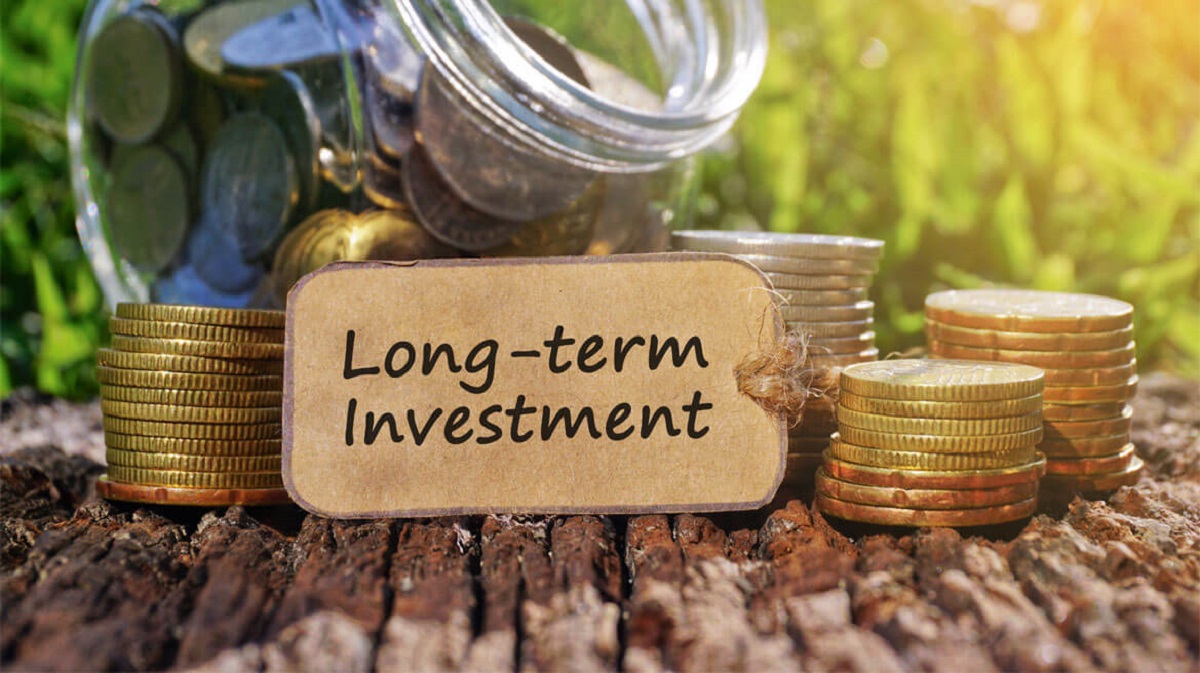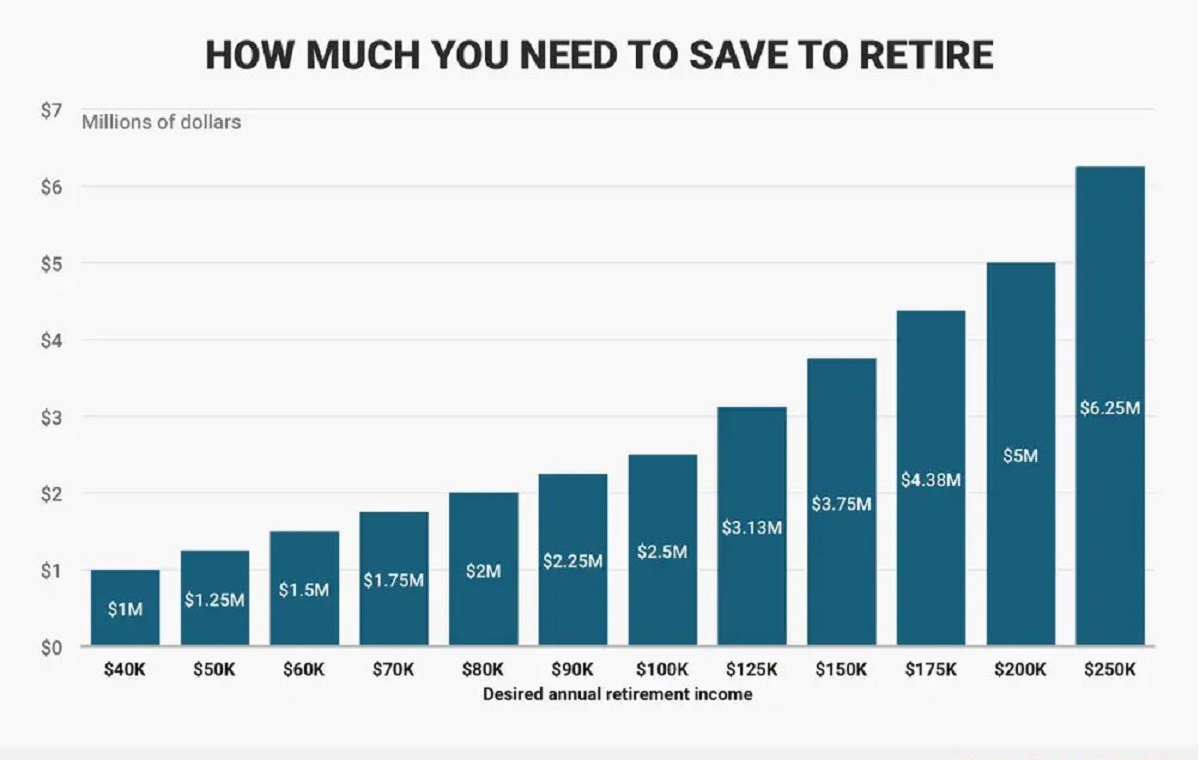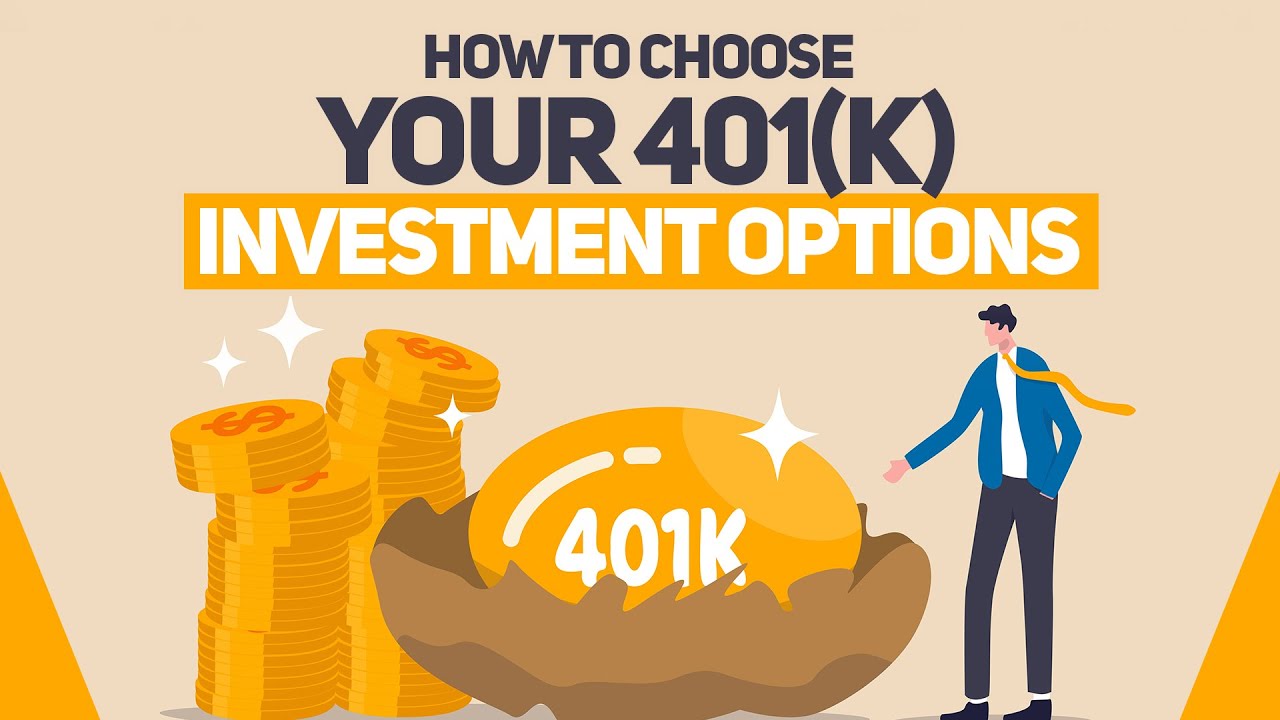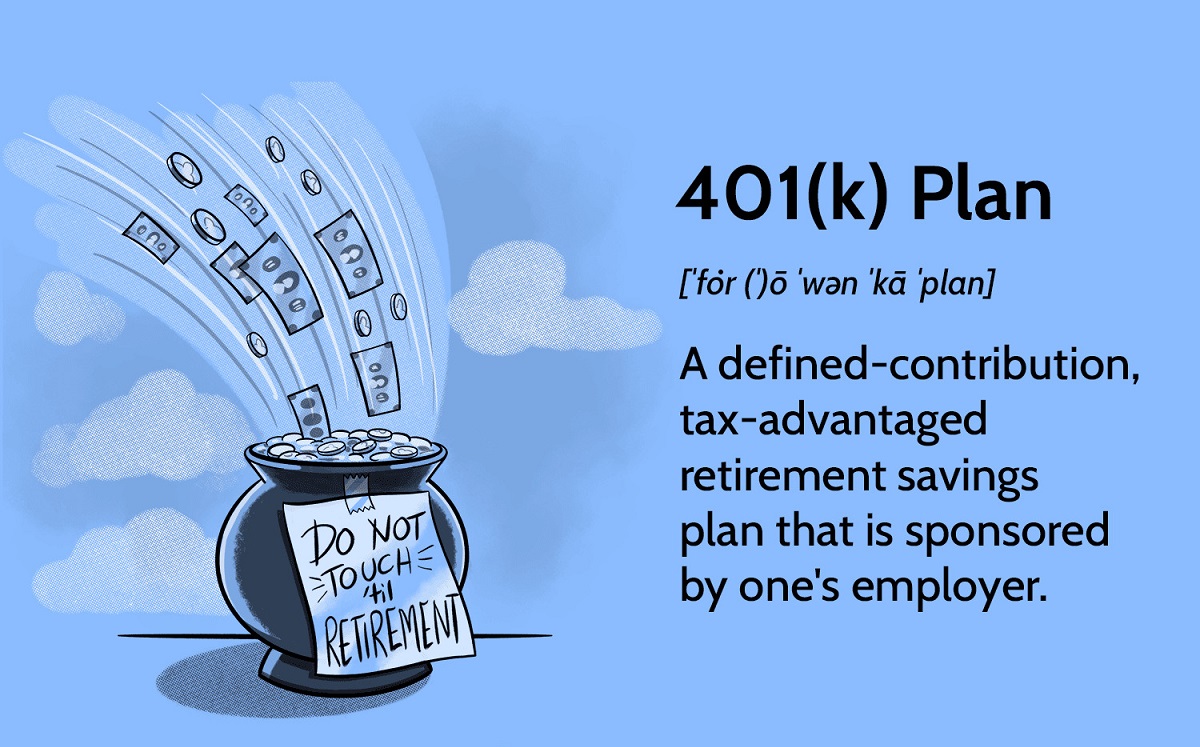Introduction
When it comes to planning for retirement, one of the key considerations is choosing the best investments to secure your financial future. Investing wisely can provide you with the opportunity to grow your wealth and generate income even after you’ve stopped working. However, with so many investment options available, it can be overwhelming to determine where to allocate your hard-earned savings.
In this article, we will explore the best investments for retirement that can help you achieve your financial goals. From the stock market to real estate, retirement accounts to dividend stocks, we will discuss various investment options and their potential benefits.
It’s important to note that the best investments for retirement may vary depending on your individual risk tolerance, time horizon, and financial goals. Each investment option has its own set of advantages and considerations, so it’s crucial to do your research and consult with a financial advisor before making any investment decisions.
By diversifying your portfolio and considering a mix of different investments, you can mitigate risk and potentially maximize returns. Let’s explore the various investment options available for retirement and how they can contribute to long-term financial security.
Stock Market Investments
Stock market investments are one of the most popular options for building wealth and setting yourself up for a comfortable retirement. By purchasing shares of publicly traded companies, you become a partial owner and have the potential to benefit from their growth and profitability.
Investing in the stock market allows you to take advantage of the long-term appreciation of stocks. Historically, the stock market has outperformed other investment classes over extended periods. However, keep in mind that stock prices can be volatile in the short term.
One way to invest in the stock market is through individual stocks. This approach requires careful research and analysis to select companies with strong growth potential. Alternatively, you can invest in mutual funds or exchange-traded funds (ETFs) that offer exposure to a diversified portfolio of stocks.
Dividend stocks are another attractive option for retirement investors. These are stocks issued by companies that share a portion of their profits with shareholders in the form of dividends. Dividend stocks can provide a reliable stream of income during retirement.
It’s important to note that investing in the stock market carries some level of risk. Stock prices can fluctuate based on market conditions, economic factors, and company performance. Diversification, thorough research, and a long-term investment horizon can help mitigate these risks.
Overall, stock market investments have the potential to deliver significant returns and grow your retirement savings. However, it’s important to carefully consider your risk tolerance and investment strategy before diving into the stock market.
Bonds
Bonds are considered a more conservative investment option compared to stocks. When you invest in bonds, you are essentially lending money to governments, municipalities, or corporations in exchange for regular interest payments. Bonds provide a fixed income stream and are known for their relatively lower risk profile.
Government bonds, specifically those issued by stable countries, are typically the safest option. These bonds are backed by the full faith and credit of the government, making them less likely to default on payments. Municipal bonds are issued by local governments to fund infrastructure projects, while corporate bonds are issued by companies to raise capital.
One key advantage of bonds is their predictable income stream. The interest payments, known as coupon payments, are usually made semi-annually or annually, providing investors with a steady flow of income. Additionally, if you hold the bond until maturity, you can expect to receive the full face value of the bond.
Bonds can be a valuable addition to a retirement portfolio, especially for investors who prioritize capital preservation and income stability over higher returns. They can offer a reliable source of income during retirement and help balance out the volatility of other investments.
It’s important to consider the interest rate environment when investing in bonds. Bond prices and yields have an inverse relationship – when interest rates rise, bond prices tend to fall, and vice versa. Therefore, it’s essential to carefully assess interest rate trends and potentially diversify your bond investments to manage this risk.
Overall, bonds can provide stability, income, and capital preservation to a retirement portfolio. They are an essential investment option to consider for conservative investors looking for a reliable income stream and a lower level of risk.
Real Estate
Real estate is a tangible investment option that can provide long-term growth and income potential for retirement. Investing in real estate can be done in several ways, including residential properties, commercial properties, and real estate investment trusts (REITs).
One of the primary benefits of real estate investments is the potential for appreciation. Over time, properties tend to increase in value, which can lead to significant returns on investment. Additionally, real estate can provide a steady stream of rental income, making it a popular choice among retirees seeking reliable cash flow.
Residential properties, such as single-family homes or apartments, offer the opportunity to generate rental income and benefit from property value appreciation. It’s important to consider location, market trends, and property management when investing in residential real estate.
Commercial properties, such as office buildings, retail spaces, or industrial warehouses, can also be lucrative investments. These properties often provide higher rental yields and longer lease terms, making them attractive for income-seeking investors.
If you prefer a more passive approach to real estate investing, REITs can be a viable option. REITs are companies that own, operate, or finance income-generating real estate. By investing in REITs, you can gain exposure to a diversified portfolio of properties without the need for direct ownership or management responsibilities.
Real estate investments, however, require careful consideration and due diligence. Factors like market conditions, property maintenance, and tenant occupancy can influence the success of your investment. It’s crucial to conduct thorough research or seek the assistance of a real estate professional before making any real estate investment decisions.
In summary, real estate presents an opportunity for long-term growth and income generation in retirement. Whether through direct ownership or investment in REITs, real estate can diversify your portfolio and provide a tangible asset with potential financial rewards.
Retirement Accounts
Retirement accounts, such as 401(k)s and Individual Retirement Accounts (IRAs), are specifically designed to help individuals save for retirement. These accounts offer several tax advantages that can accelerate the growth of your savings over time.
A 401(k) is typically offered by employers, allowing employees to contribute a portion of their salary on a pre-tax basis. In many cases, employers also provide matching contributions, which further boost your retirement savings. The contributions you make to a 401(k) are tax deductible, meaning you can reduce your taxable income in the year of contribution.
Traditional IRAs also offer tax advantages. Contributions to a traditional IRA are tax deductible, and your investment earnings grow tax-deferred until retirement, when you start withdrawing funds. At that point, withdrawals are treated as taxable income.
Roth IRAs, on the other hand, allow you to contribute after-tax dollars. While contributions are not tax-deductible, qualified withdrawals in retirement are tax-free. Roth IRAs offer the advantage of tax-free growth potential and flexibility in retirement.
One of the main benefits of retirement accounts is the power of compounding. Over time, your investments can grow exponentially through reinvesting dividends and taking advantage of the tax advantages provided by these accounts.
It’s important to note that retirement accounts have contribution limits, so it’s crucial to maximize your contributions to take full advantage of the tax benefits. Additionally, it’s wise to diversify your retirement accounts by investing in a mix of stocks, bonds, and other investment options to mitigate risk.
Retirement accounts play a crucial role in long-term financial planning, providing a tax-efficient way to save for retirement. By taking advantage of these accounts and contributing regularly, you can secure a more comfortable retirement and potentially enjoy significant tax savings along the way.
Mutual Funds
Mutual funds are investment vehicles that pool money from multiple investors to invest in a diversified portfolio of stocks, bonds, or other assets. These professionally managed funds offer individuals the opportunity to invest in a wide range of securities without needing to actively select and manage individual investments.
One of the key advantages of mutual funds is their diversification. By investing in a mutual fund, you gain exposure to a basket of different securities, which helps spread risk. This diversification can be particularly beneficial for retirement investors looking to mitigate volatility and achieve steady growth.
Mutual funds are available in various categories, such as equity funds, bond funds, balanced funds, and index funds. Equity funds primarily invest in stocks, while bond funds focus on fixed-income securities. Balanced funds offer a mix of both stocks and bonds, while index funds aim to replicate the performance of a specific market index.
Investing in mutual funds allows you to benefit from professional management. Fund managers analyze market conditions, conduct research, and make investment decisions on your behalf. This can be advantageous for individuals who may not have the time or expertise to manage their investments actively.
Mutual funds also offer liquidity, meaning you can typically buy or sell shares on any business day. This makes them a flexible option for retirement investors who may need to access their money if unexpected expenses arise.
It’s important to consider the expense ratio and fees associated with investing in mutual funds. These costs can vary between different funds and can impact your overall returns. Researching and comparing fund expenses is essential to ensure you are getting good value for your investments.
In summary, mutual funds provide a convenient and diversified approach to investing in a range of securities. They offer professional management, diversification, and liquidity, making them a suitable investment option for retirement planning.
Dividend Stocks
Dividend stocks are shares of companies that distribute a portion of their earnings to shareholders in the form of dividends. These stocks can be an attractive option for investors seeking a regular income stream, making them particularly appealing for retirement planning.
Dividends are typically paid quarterly or annually, providing a predictable source of cash flow. This can be especially beneficial for retirees who rely on their investments to cover living expenses. Dividend stocks can provide a more stable income compared to other investment options, such as growth stocks or bonds.
Investing in dividend stocks also offers the potential for long-term growth. Many companies that consistently pay dividends have a track record of stable earnings and financial health. By reinvesting dividends and taking advantage of compounding, you can potentially grow your investment over time.
Another advantage of dividend stocks is their defensive nature. During economic downturns or market volatility, dividend-paying companies may be viewed as more stable and resilient. Dividends can serve as a cushion against market losses and provide a reliable source of income when other investments may be struggling.
When selecting dividend stocks, it’s important to consider several factors. Look for companies with a history of consistent dividend payments and a solid track record of financial performance. Additionally, analyze the company’s dividend yield, which is the dividend payment relative to the stock price. This can provide insight into the income potential of the investment.
However, it’s crucial to note that dividend stocks do come with risks. Companies may reduce or eliminate dividend payments during challenging times, and stock prices can still be subject to market fluctuations. Diversification among different sectors and diligent research can help manage these risks and potentially enhance your investment outcomes.
In summary, dividend stocks can provide a steady income stream and long-term growth potential for retirement investors. By carefully selecting dividend-paying companies and diversifying your investments, you can potentially enjoy reliable cash flow and participate in the success of well-established businesses.
Annuities
Annuities are financial products designed to provide a steady stream of income during retirement. They are typically offered by insurance companies and can be a useful tool to supplement other retirement savings and investments.
There are two main types of annuities: immediate and deferred. Immediate annuities are purchased with a lump sum payment and begin providing income to the annuitant immediately. Deferred annuities, on the other hand, are funded over time, allowing the investment to grow before converting into regular payments.
One of the key benefits of annuities is their ability to provide guaranteed income for life. Depending on the terms of the annuity contract, you can receive regular payments that last as long as you live, providing a reliable source of income throughout retirement.
Annuities also offer tax advantages. The growth within the annuity is tax-deferred, meaning you do not pay taxes on the earnings until you start receiving payments. This can allow your investment to compound over time, potentially resulting in higher overall returns.
Some annuities also come with optional features, such as death benefits or inflation protection. These features can help protect your investment and ensure that your loved ones or beneficiaries receive a portion of the annuity’s value in the event of your passing.
However, it’s important to consider some drawbacks of annuities. They can be complex and come with fees, which can impact the overall return on investment. Additionally, annuities are illiquid, meaning it may be challenging to access the full value of your investment if you need a large sum of money in the future.
Before purchasing an annuity, it’s essential to carefully review the terms and conditions of the contract, including fees, surrender charges, and any limitations on access to your funds. Consulting with a financial advisor can help you determine if an annuity is a suitable option for your retirement goals and financial situation.
In summary, annuities can be a valuable retirement investment vehicle, providing a reliable income stream and tax advantages. Understanding the terms and features of the annuity, along with the associated costs, is essential to make an informed decision about incorporating annuities into your retirement plan.
Certificates of Deposit (CDs)
Certificates of Deposit (CDs) are fixed-term savings accounts offered by banks and credit unions. They are a low-risk investment option that can provide a predictable return on your investment.
When you invest in a CD, you agree to keep your money deposited for a specified period, known as the term. During this time, your funds earn a fixed interest rate, which is typically higher than traditional savings accounts. At the end of the term, you can withdraw your initial investment along with the accrued interest.
CDs offer several advantages for retirement investors. Firstly, they are considered low risk because they are insured by the Federal Deposit Insurance Corporation (FDIC) up to the maximum allowed by law. This insurance protects your investment in case the bank or credit union fails.
Another benefit of CDs is their simplicity. Once you open a CD, you don’t need to actively manage or monitor your investment. The interest rate is predetermined, providing certainty about the return you will receive at maturity.
CDs are available in various terms, ranging from a few months to several years. Short-term CDs offer quick access to your money, while longer-term CDs typically provide higher interest rates. Depending on your retirement goals and financial needs, you can choose a CD term that aligns with your investment timeframe.
One important consideration when investing in CDs is the trade-off between liquidity and interest rates. CDs are not as liquid as regular savings accounts, meaning you may face penalties for withdrawing your funds before the maturity date. However, if you don’t anticipate needing immediate access to your funds, the higher interest rates offered by CDs can make them an attractive option for retirement savings.
It’s also essential to shop around and compare CD rates from different institutions to ensure you’re getting the best return on your investment. Online banks often offer higher interest rates on CDs compared to traditional brick-and-mortar banks.
In summary, Certificates of Deposit (CDs) are a low-risk investment option that can provide a predictable return on your investment. They offer simplicity and peace of mind, making them a suitable choice for retirement investors looking to preserve capital and earn a steady income.
High-Yield Savings Accounts
High-yield savings accounts are a type of savings account offered by banks that offer higher interest rates compared to traditional savings accounts. These accounts provide a way to grow your savings while keeping your money easily accessible.
One of the primary advantages of high-yield savings accounts is the attractive interest rates they offer. While traditional savings accounts may provide minimal interest earnings, high-yield savings accounts allow your money to work harder for you. The higher interest rates can help your savings grow over time, especially when compounded regularly.
High-yield savings accounts are often offered by online banks, which generally have lower overhead costs compared to traditional banks. This allows them to pass on the savings to their customers in the form of higher interest rates. However, it’s important to verify that the online bank is reputable and insured by the FDIC to ensure the safety of your funds.
These accounts also provide flexibility and liquidity. You can access your funds whenever needed, making them suitable for both short-term and long-term savings goals. This liquidity feature sets high-yield savings accounts apart from other investment options that may carry restrictions or penalties for accessing funds before a specific period.
High-yield savings accounts are a particularly attractive option for emergency funds and short-term savings goals. By keeping your savings in an account that earns competitive interest, you can preserve your capital while still being able to withdraw funds when required.
It’s important to keep in mind that interest rates can fluctuate over time, so it’s a good practice to regularly review your account and compare rates from different banks to ensure you’re maximizing your returns. Additionally, high-yield savings accounts may have certain requirements, such as minimum balance or monthly deposit requirements, so it’s essential to understand and meet these conditions to fully benefit from the higher interest rates.
In summary, high-yield savings accounts are a safe and accessible option for growing your savings while earning a higher interest rate. They provide flexibility, liquidity, and the potential for steady growth over time. Consider opening a high-yield savings account to make the most of your retirement savings and other financial goals.
Conclusion
Planning for retirement requires careful consideration of the best investments to secure your financial future. From stock market investments and bonds to real estate and retirement accounts, there are various options available for building wealth and generating income during retirement.
The stock market offers the potential for significant returns, but it comes with volatility and risk. Diversifying your portfolio with different types of investments such as bonds can help balance out risks and provide a steady income stream. Real estate investments, on the other hand, provide tangible assets and the potential for appreciation and rental income.
Retirement accounts, such as 401(k)s and IRAs, offer tax advantages and provide a structured way to save for retirement. Mutual funds provide diversification and professional management, while dividend stocks offer a reliable income stream. Annuities can guarantee income for life, and certificates of deposit offer low-risk, fixed returns.
Lastly, high-yield savings accounts provide attractive interest rates and liquidity, making them suitable for short-term savings and emergency funds. Each investment option has its own set of advantages and considerations, and it’s important to assess your individual financial goals, risk tolerance, and time horizon when making investment decisions.
In conclusion, there is no one-size-fits-all approach to retirement investing. It’s essential to diversify your investments, conduct thorough research, and consult with a financial advisor to create a well-balanced portfolio that aligns with your long-term financial goals. By selecting the best investments for your retirement, you can increase the likelihood of achieving financial security and enjoying a comfortable retirement lifestyle.

























